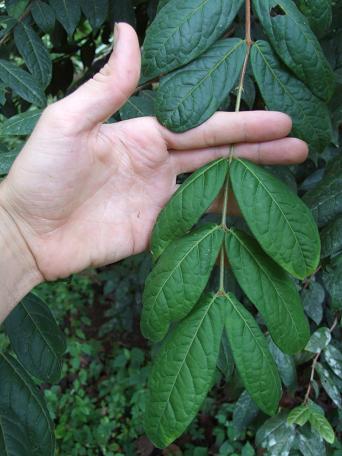News of recent studies has revealed that an estimated 390 billion trees are growing in Amazonia today, consisting of an approximate 16,000 species. 227 of these species are termed “hyperdominant”, because they represent about half of the total number of trees, while the rarest 11.000 species make up only 0.12% of the total.
Why only 227 species make up such a disproportional percentage of overall trees remains unknown.
“We knew that, normally, a few species dominate ecosystems, but if you have a system that has 16,000 tree species but just 227 make up half of the trees, that was pretty surprising even for us,” said lead author Dr Hans ter Steege from the Naturalis Biodiversity Center in the Netherlands.”
“In the paper, Dr. ter Steege and the team of more than 100 scientists wrote that there was no evidence that two key functional traits for trees – seed mass and wood density – played a part in determining what species dominated the landscape.” Read full article on BBC
Although the long and highly-involved history of human-forest habitation/impact/modification in Amazonia was not mentioned in the article(s), I am curious if the researchers have begun to look into the possible correlation between the 227 hyperdominant species and their ethnobotanical significance among past and present populations of Amazonian indigenous peoples. My guess is that the 227 hyperdominant species also have a wide range of human uses.
With recent findings confirming that sophisticated human societies inhabited the Bolivian Amazon 10,400 years ago, and that human habitation of the region likely dates back as far as 30,000 years, coupled with our firmly established understanding that Amazonian peoples have managed highly complex, large-scale domesticated landscapes (massive agro-silvo-pastoral systems), it seems inevitable that long-term human presence in the Amazon has played significant role in determining present day biodiversity and species distribution.
We’ll see what answers science comes up with.
Here are a few relevant articles on the subject of pre-Colombian Amazonian history, Amazonian agroforestry, and anthropogenic landscapes in the Amazon:
Clark Erickson: Culture amidst the Pristing: The Anthropogenic Forests of the Bolivian Amazon
NPR Article: Amazon was once home to advanced civilizations
Discovery News: Did humans arrive in the Americas 30,000 years ago?
New York Times: Once Hidden by Forest, Carvings in Land Attest to Amazon’s Lost World
Science Daily: Pre-Colombian societies in the Amazon may have been much larger and more advance then thought
Agroforestry and the Built Environment by: Spencer Woodard (Anthropogen):
New Yorker: Under the Jungle by David Grann



